Note: This is a long post about my experience on the Camino de Santiago. Practical tips on packing and logistics for a winter pilgrimage are coming soon.
I was finishing lunch in San Martín del Camino and I asked how many kilometers it was to Hospital de Órbigo, where I planned to sleep for the night. “Seventeen kilometers,” the waitress said. “Seven kilometers,” said Massimo, one of my walking companions. “Nine kilometers,” said an old man sitting at the bar.
No one seems to know with absolute certainty how many kilometers there are between one spot and another on the Camino de Santiago. The highway just outside Roncesvalles, one of the starting points of the French Way, says 790 kilometers to Santiago. When you add up the various legs of the journey, it could be a little more or a little less. When I began walking in Pamplona, supposedly 705kms from Santiago, the margin of error was maddening. Two kilometers are not the same as five kilometers when you’re on foot, saddled with a pack and have already walked a couple dozen kilometers.
But by the time I got to San Martín del Camino, I had ceased to fret about kilometers. In the evenings, I would decide where to sleep the next night – almost entirely dependent on where the next open inn was – and that’s where I had to go. If it was raining, I had to walk. If my feet got sucked into the mud, I had to walk. If the route went through the mountains or traversed tiny towns of falling-down houses or ran parallel to a busy highway, I had to walk.
In fact, my only responsibility for 26 days was to walk. This was a radical disconnection from what came before.
My last day of work was December 21st, 2012. If not quite the end of the world, it was the end of a chapter of my life and the next page was of course blank.
I spent my last week on the job choking back tears constantly. My last management committee. My last Powerpoint. My last phone call to my closest colleague with whom I had exchanged dozens of calls daily. My last session with my boss to review pending items. Now all the pending items would be managed by someone else, or perhaps just left eternally pending. What the hell was I doing leaving a well-paid job with an excellent boss at a company that does some good in the world in a place where I love living? I wasn’t burnt out. I wasn’t unfulfilled. I never felt exploited. I didn’t get fired. There was nothing external to give me a nudge – I had to take the leap myself. It had taken me a year to get up the nerve to put in notice but I had finally done it.
I had thought about walking the Camino some day, but in my mind’s eye, I was usually prancing along in the golden rays of the sun and it was definitely not January. However, January was when I had a month free in Spain with no responsibilities, a set of circumstances not likely to repeat itself in the foreseeable future. I left my job to have time to pursue personal goals and dreams. So why not walk the Camino?
In that moment of change from one chapter to the next, in which I had taken a leap that couldn’t be un-leaped, the Camino was calling me.
* * *
There are many ways to get to Santiago. Walking. Horse. Bike. The North Way, the Primitive Way, the English Way, the French Way. There are pilgrims who walk bits and pieces on weekends over the course of several years. There are pilgrims who walk only the last 100 kilometers, the minimum distance for the walk to be recognized as a pilgrimage. There are pilgrims who walk from their own front doors, like the Spanish Iron Woman I met who began in her home city of Barcelona, getting lost on the poorly marked Catalonian Way and imploring strangers to give her a place to sleep in towns with no open inns.
The French Way, today the most popular route, first rose to prominence in the 12th and 13th century. It was to some extent created and promoted around that time. During the Moorish rule of Spain starting in the 8th century, many Christian relics and treasures were spirited northward for safekeeping. As the Christian Spanish effort to push back the Moors – the Reconquista – moved from north to south along the Iberian peninsula over the course of centuries, there was a clear interest to consolidate Christian influence in the territories where the Moors had been expelled. The concentration of relics in the northern part of Spain made the region a logical as well as a spiritual choice for a new pilgrimage route.
In the centuries before Gore-Tex and waterproof hiking boots, pilgrims from all over Europe set out in spring for Santiago to return home by autumn. Pilgrims undertook the journey for all kinds of reasons: to ask for healing on behalf of an ill relative, to seek forgiveness or to fulfill a punishment for crimes committed. They generally stayed with other pilgrims from their region. If a pilgrim died on the Way, it was the group’s responsibility to bury him and send his belongings back to his family.
Despite the temptation to start at my front door in Bilbao and take the North Way along the coast, I ultimately chose to follow the French Way, the only one with sufficient infrastructure to walk in winter. The French Way typically starts in St-Jean-Pied-de-Port or Roncesvalles, but I decided to set off from Pamplona, the capital of Navarra. In the original 12th century pilgrim’s guide, Book 5 of the Codex Calixtinus, the author writes of the Navarrese, “They are debauched, perverse, perfidious, disloyal and corrupt, libidinous, drunkard…incapable of anything virtuous, well-informed of all vices and iniquities.” A good place to start.
I intended to walk the Camino by myself. My husband and I agreed that the Camino is a special journey best faced alone. It would be a time for thoughtful solitude and pushing my limits, both physical and emotional.
* * *
My body had to be slowly coaxed into adapting to the requirements of pilgrimage. The first half-hour of each day I felt like an old locomotive, gradually picking up speed and hitting my rhythm as my creaky joints warmed up and got greased. My hips and knees stopped stiffening after about 150 kilometers. My back got on so well with my backpack after the first week that it was as if I was carrying nothing at all.
I discovered that my limit was a matter of the goal I set for myself. At the start, 25 kilometers seemed long. Thirty kilometers was a serious effort. Then, coming out of Burgos with 200 kilometers in my legs, I decided to walk 40 kms. I did it, and then I received an amazing gift.
When I arrived to the inn at Sahagún after 40 kilometers, I was giddy but completely wrecked. I hobbled to the shower and then collapsed on my bunk while a fellow pilgrim went out to fetch us dinner. I was alone with a South Korean man who walked 40 kilometers every day like it was nothing. He came near my bunk and looked at my feet, gave them a squeeze and said, “Sit there. Wait, wait one moment.” He came back with a steaming tub of water and instructed, “Put feet here. Ten minutes.” After ten minutes, he pulled up a chair and began manipulating my feet – squeezing, rubbing, punching, twisting. “Your feet, very tired,” he concluded. “You must touch them every day.”
In the 12th and 13th centuries, monks receiving pilgrims would often wash their feet, invoking a tradition of hospitality mentioned throughout the Old Testament and in John 13:1, when Jesus washed the apostles’ feet. I never imagined I would experience it myself, and less from a fellow pilgrim.
There are people who live for the Way and people who live off the Way. The former will give a pilgrim the shirt off his back, the latter will sell him a shirt. I met David who sleeps under a tarp on a hill above Astorga. He puts out juice and water for the pilgrims and only sometimes accepts donations in return. I saw him the next day in Astorga at the café where I was having breakfast with two other pilgrims. When we went to settle the bill, they told us David had already taken care of it. It was generosity for generosity’s sake, to set us off on the right foot that day. We marveled over it for days.
This was another of the Camino’s lessons: Have no expectations. People will disappoint you. People will surprise you. The inn might be farther or nearer than you think. Keep putting one foot in front of the other and have no expectations for what will happen next.
* * *
In the two weeks before I started the Camino, the weather was glorious. I had the sinking feeling that the weather was too good for the season and couldn’t possibly last. Sure enough, in the days before my departure, the forecast was dismal. Snow, rain, storms in general, it was all coming and all concentrated along the Camino.
January was the time I had to walk. There was no canceling the plan. I would go as far as I could go.
The forecast, for once, was not off. On the first day of my pilgrimage, it started to rain just as I reached my destination. From there, it was a week of downpour and heavy winds, but I considered myself lucky: snow started to fall in great quantities in my wake, a few days behind me.
Pushing my physical limits in this situation was a matter of course but pushing my emotional limits took a bit more doing. I don’t talk much. I have an unfortunate habit of scowling as my default expression. I am self-reliant to a fault.
I fell in with a couple of friendly pilgrims on the first evening and for the next two days, I walked more or less in a group with them: Massimo, a retired Italian gentleman on his 13th Camino, Santiago, a madrileño on his 2nd Camino and Román, from Valencia on his 1st Camino like me. Nonetheless, I was wary of getting caught up in a group. I wanted to do the Camino in semi-solitude, without worrying about manners or being well-liked.
On the 3rd day I got sick. I fell way behind as the morning wore on. That evening, Massimo, Santiago and Román were not at my inn. The next day I was back to good health and continued. It rained for hours non-stop. I felt like a puddle in human form. When I reached the next inn, nobody from the group of the first few days was there. The following day the weather was fine but I didn’t see anyone on the Camino all day. This is what it was to be truly alone.
When I reached the inn that afternoon and walked into the dorm, there were Massimo, Santiago and Román. They greeted me with smiles and hugs. As the afternoon wore on, the rest of the group trickled in. We made a big communal dinner and washed it down with cheap wine. We planned how far we would walk the next day. I was happy. I didn’t want to walk alone anymore.
The kindness on the Camino is overwhelming, particularly in January when a very small number of people are attempting the walk. Everyone shares everything – food, first aid supplies, gear, advice. The group I coincided with fluctuated between about 8 and 20 people as pilgrims dropped off or walked different distances, but there were a core 10 of us and we knew we would make it to Santiago if we all stuck together.
There was a young Australian with a beautiful smile, a Hungarian gentleman with a fantastic fade haircut and a boisterous laugh, a loving couple of recent college grads from California who cooked up elaborate vegetarian meals for all of us, and a Galician who told stories that would make you laugh so hard you couldn’t breathe. Last but not least, a gaggle of South Koreans were up for the challenge: a medical student on his last break, a sweet and shy 20-something who was constantly handing out fruit and cookies as gifts, a tall and determined Seoulite, and a star engineering student who was willing to try anything to make us laugh.
I had come to the Camino in search of solitude but I came to understand that the company of others is so much more beautiful. We don’t have to make any journey alone. When you put your hand out, eventually someone will hold it.
Among the inspirational graffiti found all along the Camino, one stood out:
Open your heart wider.
* * *
My husband was not on the Camino with me but he was always there, a kind of bedrock for my pilgrimage. He followed my kilometers from day to day and sent me sweet messages of encouragement. He was my control tower, calling ahead to find out which inns were open and even calling a sports store before I went to make sure they had what I needed in stock. He was proud to tell people I was on the Camino – not just because I was doing something hard but because it said a lot about our marriage. Within a life of “we,” we have very strong individual pursuits.
For 26 days, there was only one direction: forward to Santiago. But pilgrimages are meant to be circular, with a return to the start. It was time to finish and go home. I missed my husband.
My last day on the Camino, I walked with my habitual companions, Massimo and Román. We set out before sunrise with the objective of reaching Santiago in time for the pilgrims’ mass at noon. The beams of our flashlights thrashed about in the woods, searching for yellow arrows, and somehow we found our way. I was elated to be just 20 kilometers from the final goal and at the same time sad that my merry band of pilgrims was about to be disbanded.
I could remember what happened every single day on the Camino, unlike most of life where one day blends into the next. I had been sick. I had been soaked. I had walked kilometers and kilometers in the wind. I had suffered swollen feet. I had lost three or four kilos. I had laughed more often and harder than any time in recent memory.
I had set out alone from Pamplona and I had made it to Santiago in the company of a very special group of people from all over the world.
I was stronger than I was when I started. I opened my heart. I was no longer afraid of all the blank pages ahead.


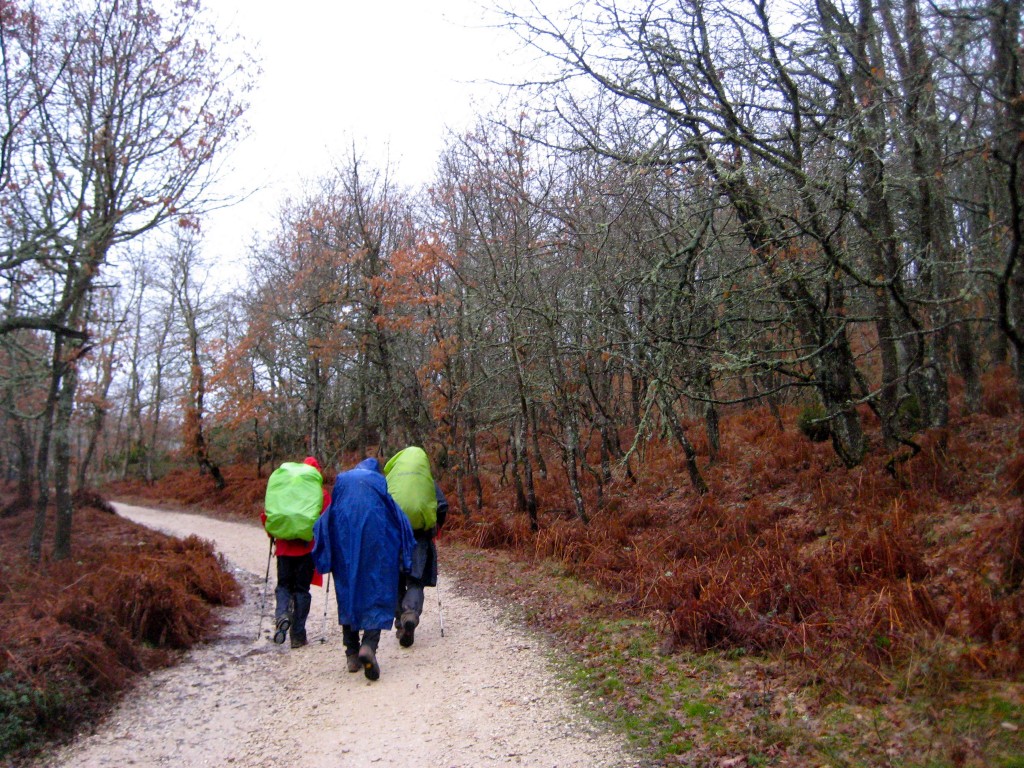
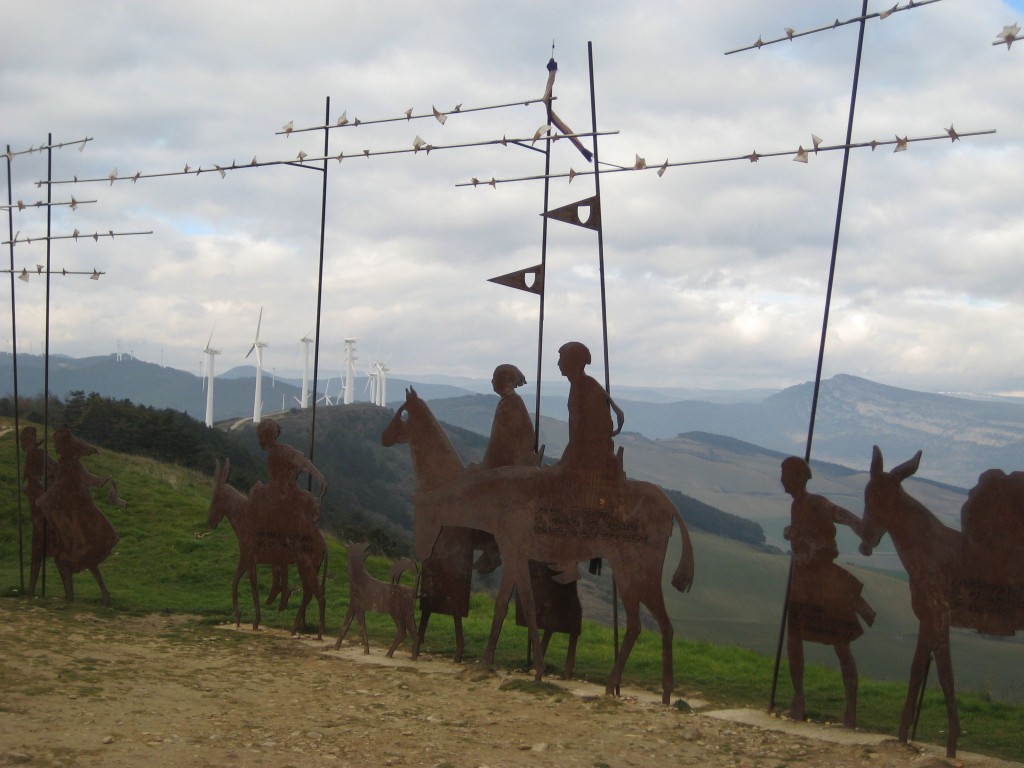
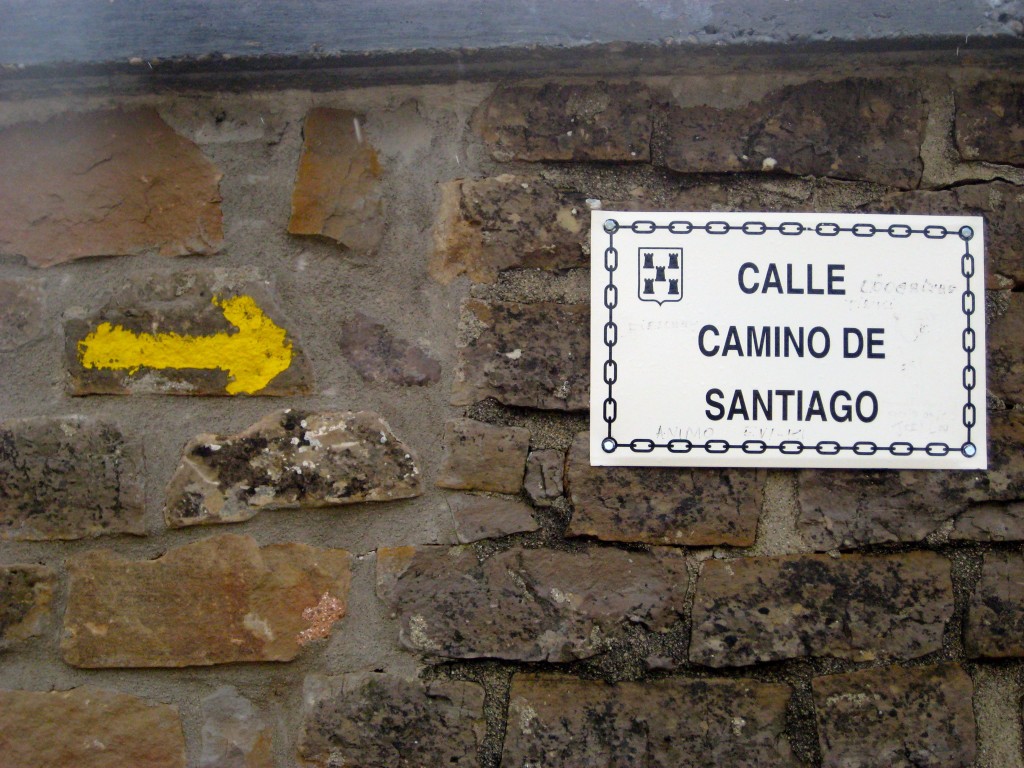
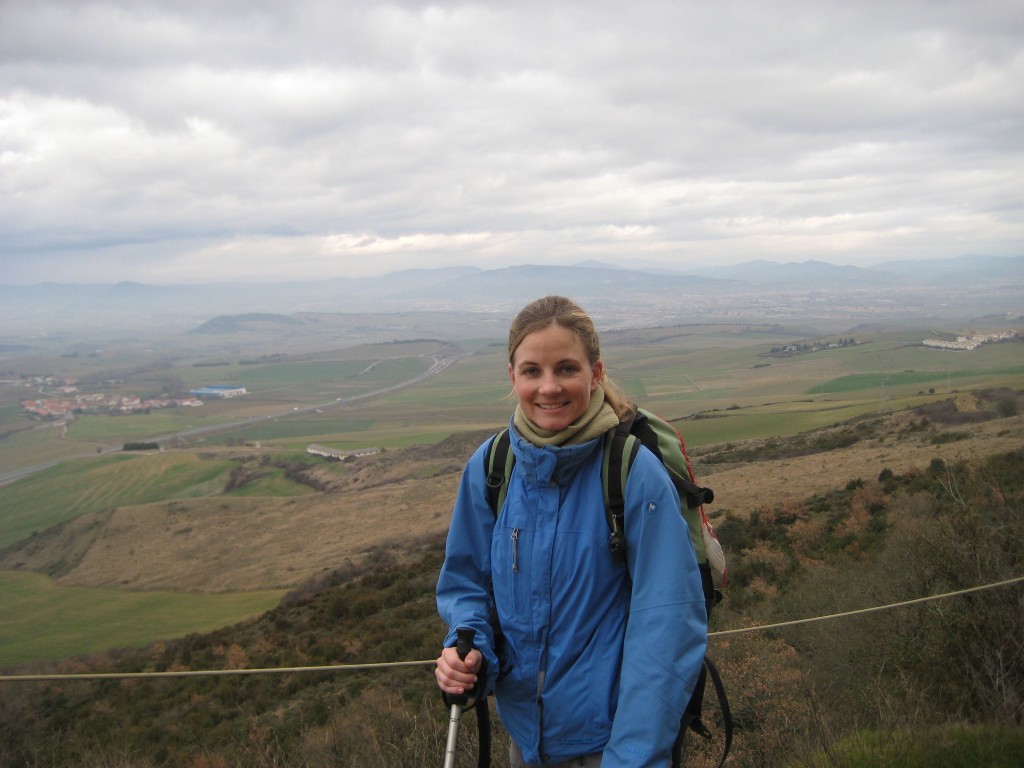
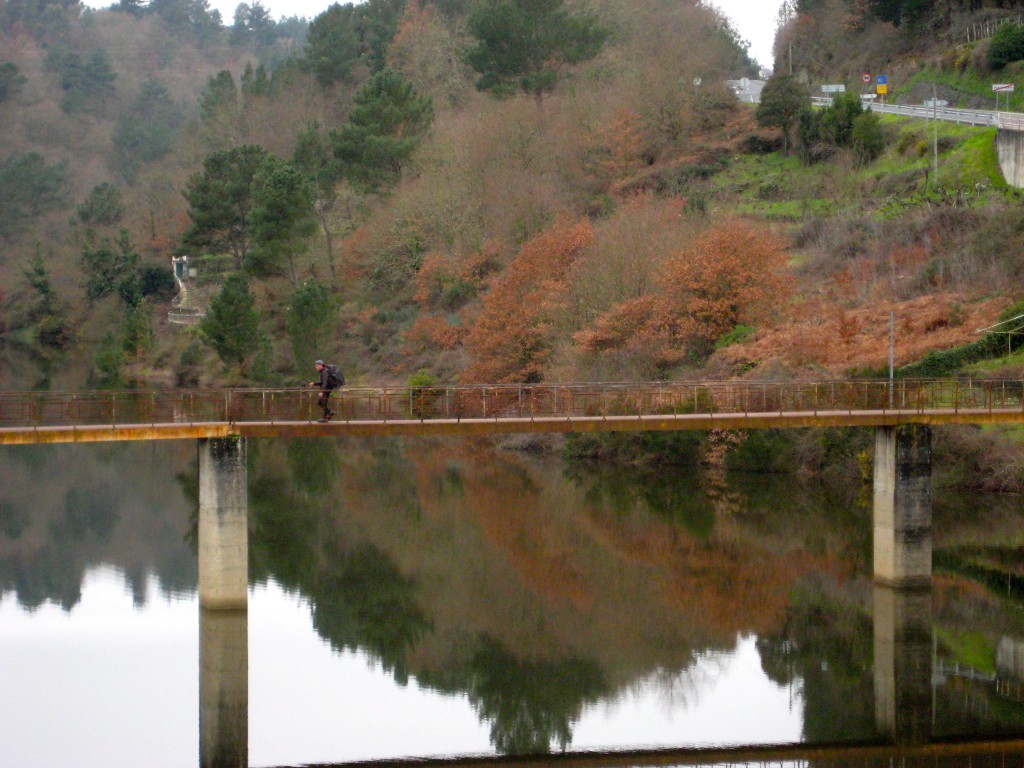
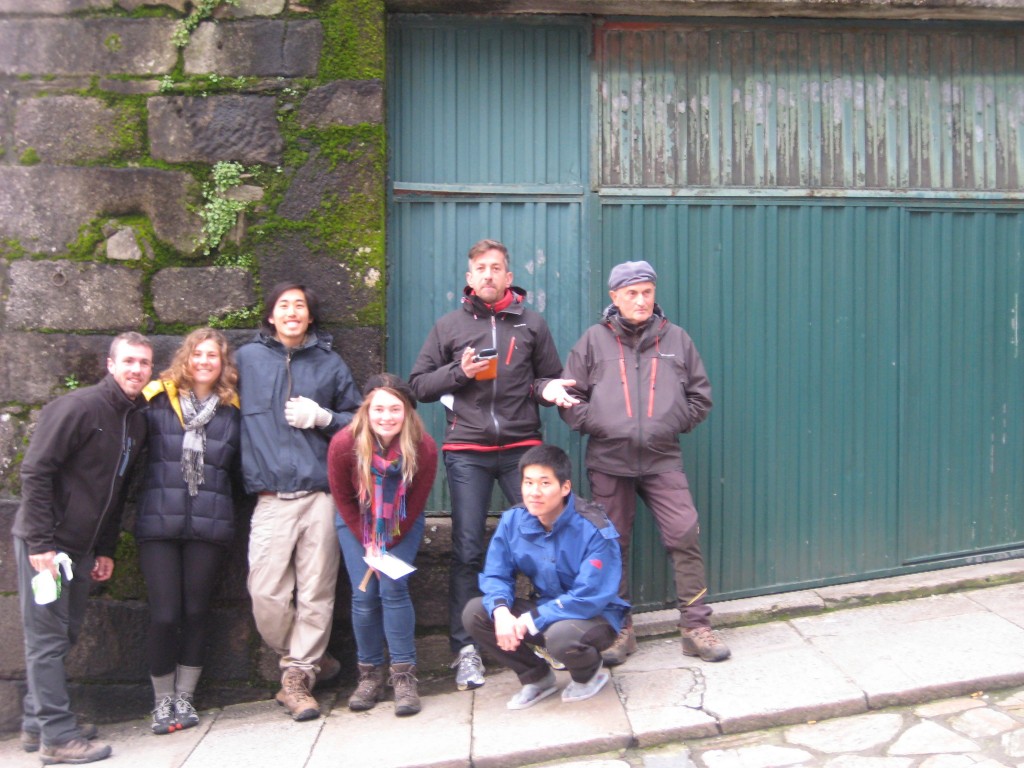

4 comments
This is fantastic Casey. My heart feels warm reading about your frame of mind, as it reminds me of my great journey of opening my heart wider on the walk. I loved finding this with our Camino family.
Thanks Gemma. It was an intense journey. Enjoy your next European adventure – I know you will make the most of it!
Hello Casey,
is there any possibility of contacting you concerning your Pilgrimage? I have the upcoming February off University and am thinking of walking the Camino, but still feel a little helpless…
Sure, drop a line through the contact form with your questions